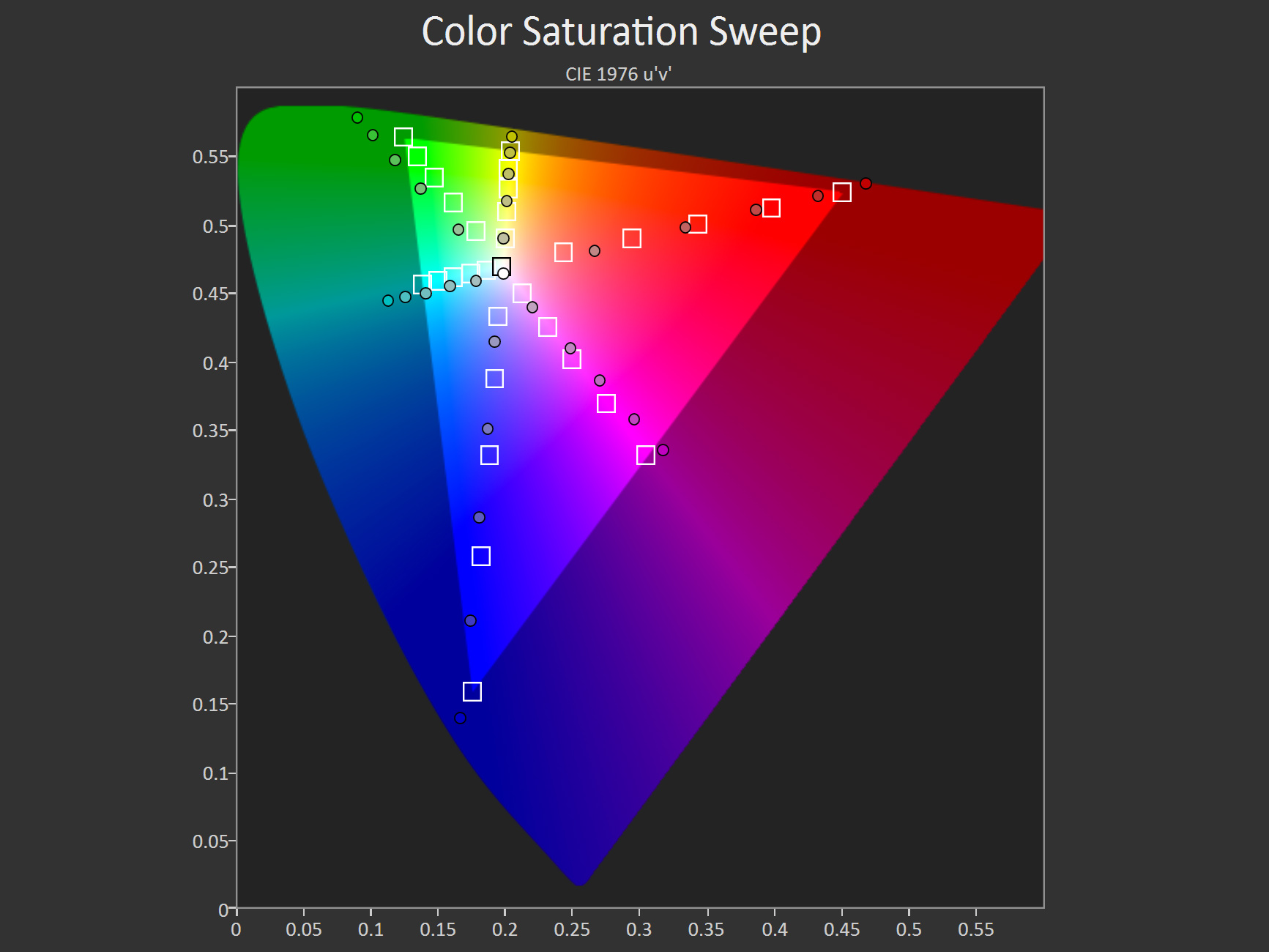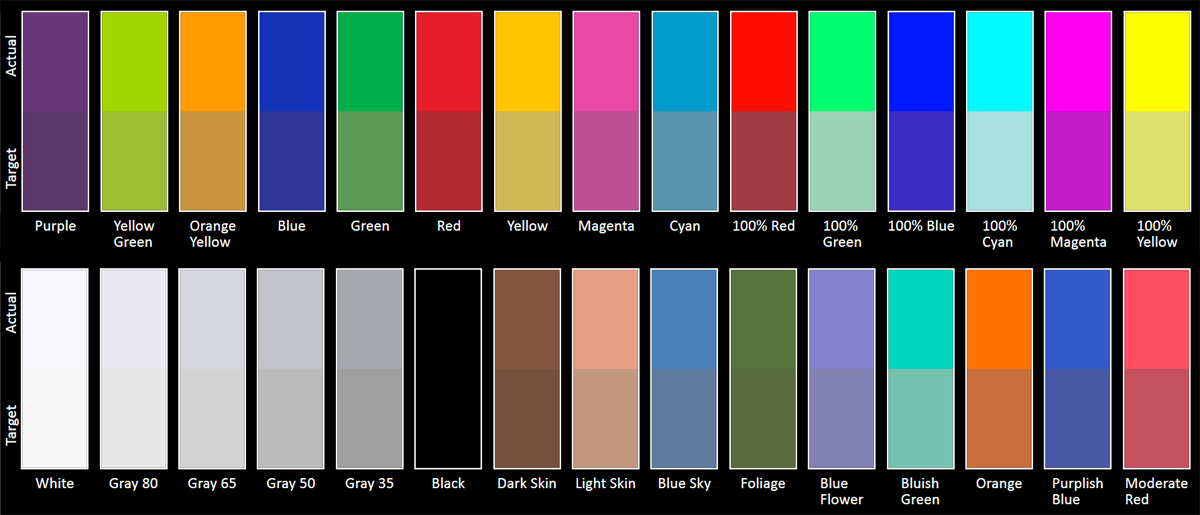Google Nexus 6 Review
Why you can trust Tom's Hardware
Display And Audio Performance
If you’ve spent enough time with hardware, you know that some specs matter, and some specs, carried to the extreme, cease to matter. Smartphone resolution is definitely nearing this limit. No one would accuse the iPhone 6 Plus’ HD screen of being a slouch, yet it offers “only” a 401 ppi density. The Nexus 6 however, packs in 493 ppi, which falls just shy of 534 ppi on the LG G3. You know how much difference we saw when viewed at a one-foot distance from screen to eye? None. Nada. Stare as long and hard as you like, but your naked eyes are not going to perceive any difference in pixel size or density unless you get really, really close. Every advance in resolution and pixel density gets us that much closer down the asymptote of diminishing benefits.
As the Nexus 6's biggest hardware feature, the 5.96-inch AMOLED display will largely set the user experience, and is probably the reason why someone would be interested in buying it in the first place. With its 2560x1440 resolution, images and text are crisp, which is expected. However, with all flagships, and even most mid-range phones, coming with "retina" displays, color accuracy has become the new quality differentiator. Google's last generation of Nexus devices placed heavy emphasis on display calibration and achieved good results. And so we begin our analysis of the Nexus 6 with high hopes.
In an effort to improve our mobile reviews, we are now using SpectraCal's CalMAN software and SpectraCal C6 colorimeter for display measurements. Not only does this bring improved accuracy and repeatability, but it also adds color accuracy measurements, which our previous reviews were sorely lacking. All of the charts below with a gray background were generated in CalMAN v5 Ultimate.


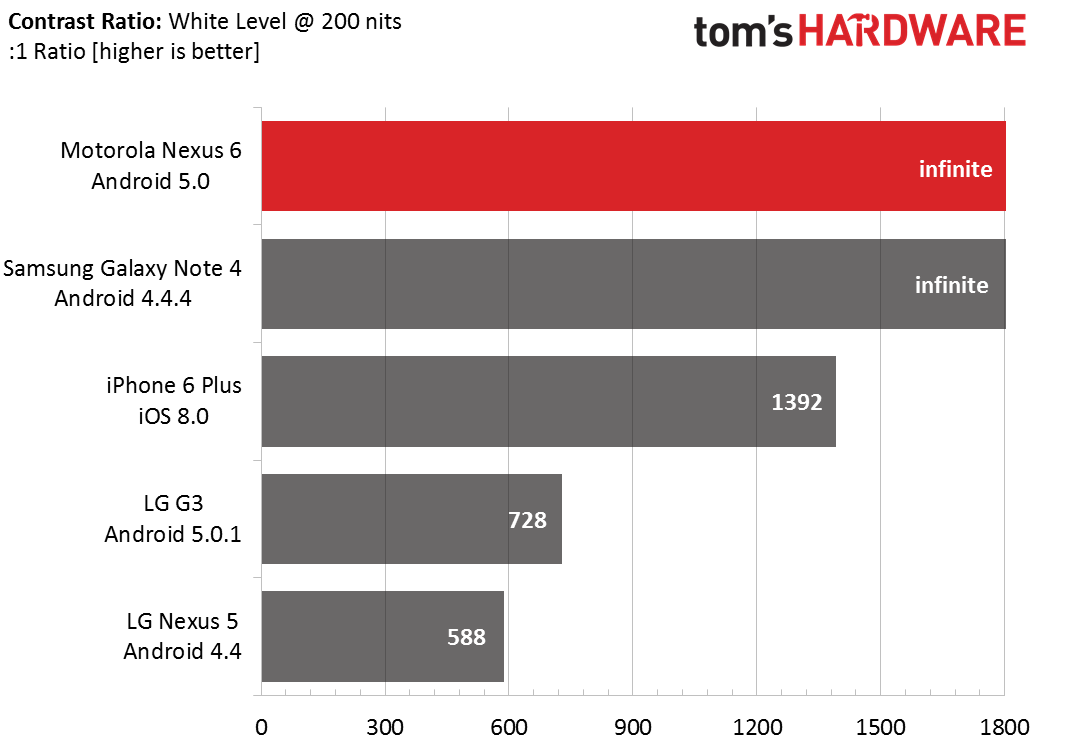
We are now reporting two different brightness levels for AMOLED displays: APL=50% and APL=100% (APL stands for Average Picture Level). If you are unfamiliar with APL, here is a good article explaining what it means. Basically, the brightness of an AMOLED display changes depending on what content is actually being displayed. The APL values we chose to measure provide a good upper and lower bound for what's practically achievable.
At an APL of 100%, the Nexus 6 falls well below 300 nits, which certainly isn't good and will definitely impair outdoor viewing. With an APL of 50%, peak brightness increases to about 387 nits, which is comparable to what other flagship phones using LCD displays achieve. In actual use, as long as we were not viewing a mostly white screen, we found it bright enough for easy reading outdoors in overcast conditions. Under a sunny sky, there’s no getting around that white screen looking gray. But when we angled the phone away a bit, we were surprised by how much detail and contrast remained, even when viewing slender fonts on a dark background. All things considered, the Nexus 6 holds up fairly well outdoors.
Black levels are truly black, only a few shades off from the bezel itself, since the display pixels actually turn off. This makes the contrast ratio mathematically infinite.
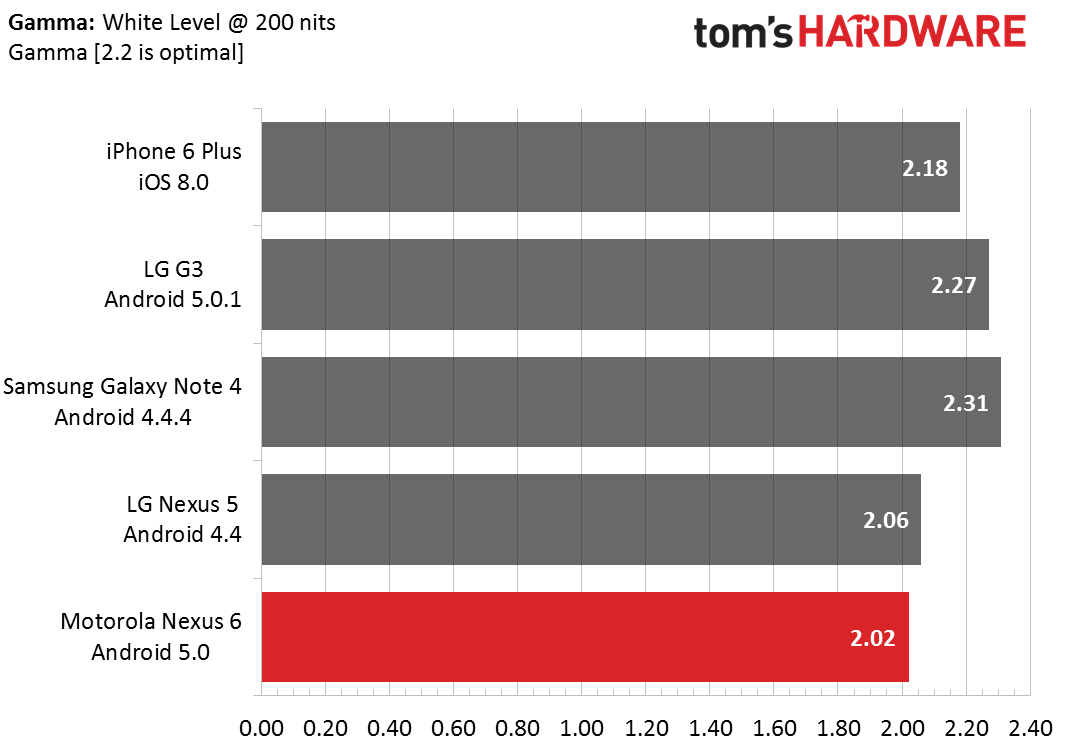
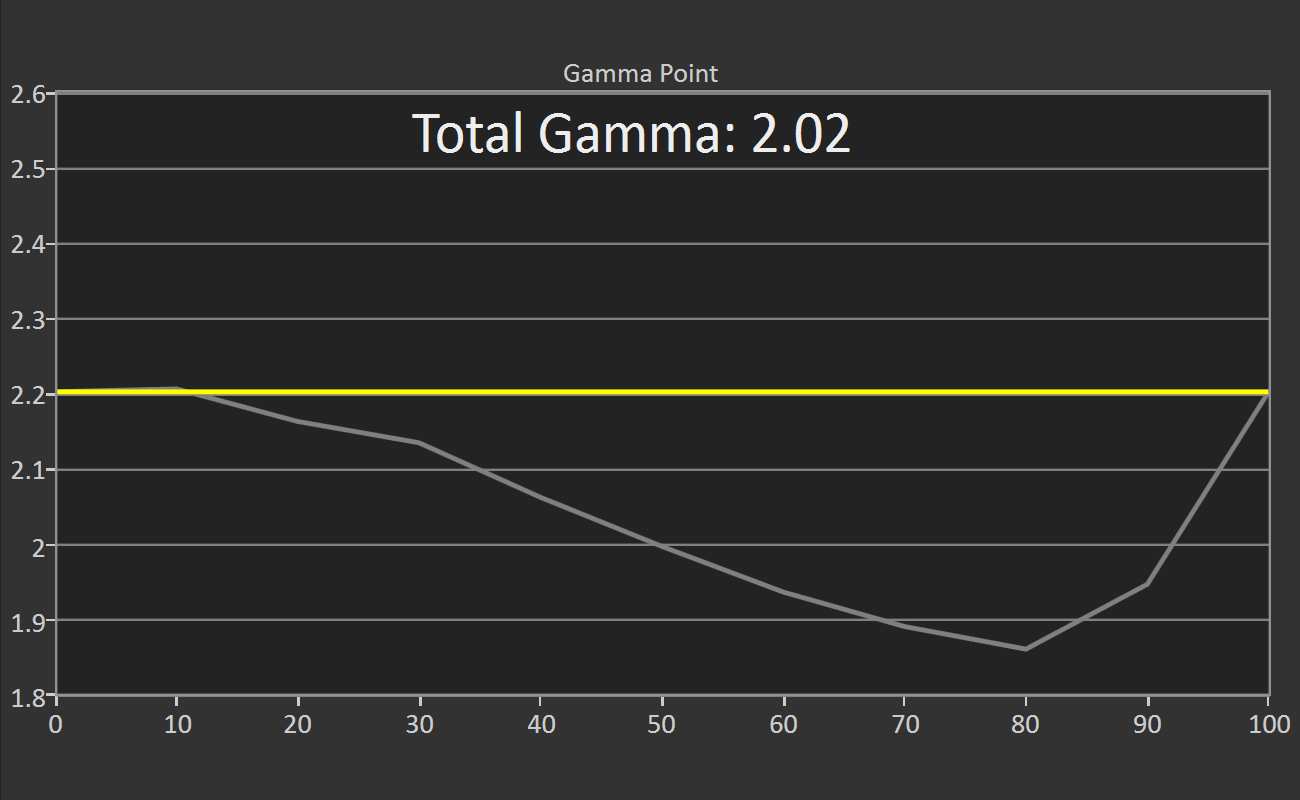
Most displays achieve an average gamma close to the ideal value of 2.2, with the iPhone 6 Plus coming the closest. The gamma curve for the Nexus 6 falls below the ideal value, dipping to under 1.9 at an 80% gray level, leading to a minor loss of shadow detail (shadows and highlights will appear brighter than intended).
Get Tom's Hardware's best news and in-depth reviews, straight to your inbox.


Most mobile devices have cooler color temperatures above 7000K. The Nexus 6 display follows this trend, though not to the same degree. Color temperature also remains constant for the different gray levels. While the screen skews slightly blue, it's not enough to be noticeable.
The RGB balance at each gray level shows a slight preference for blue at all levels, increasing as the screen approaches white (100), consistent with the color temperature results.

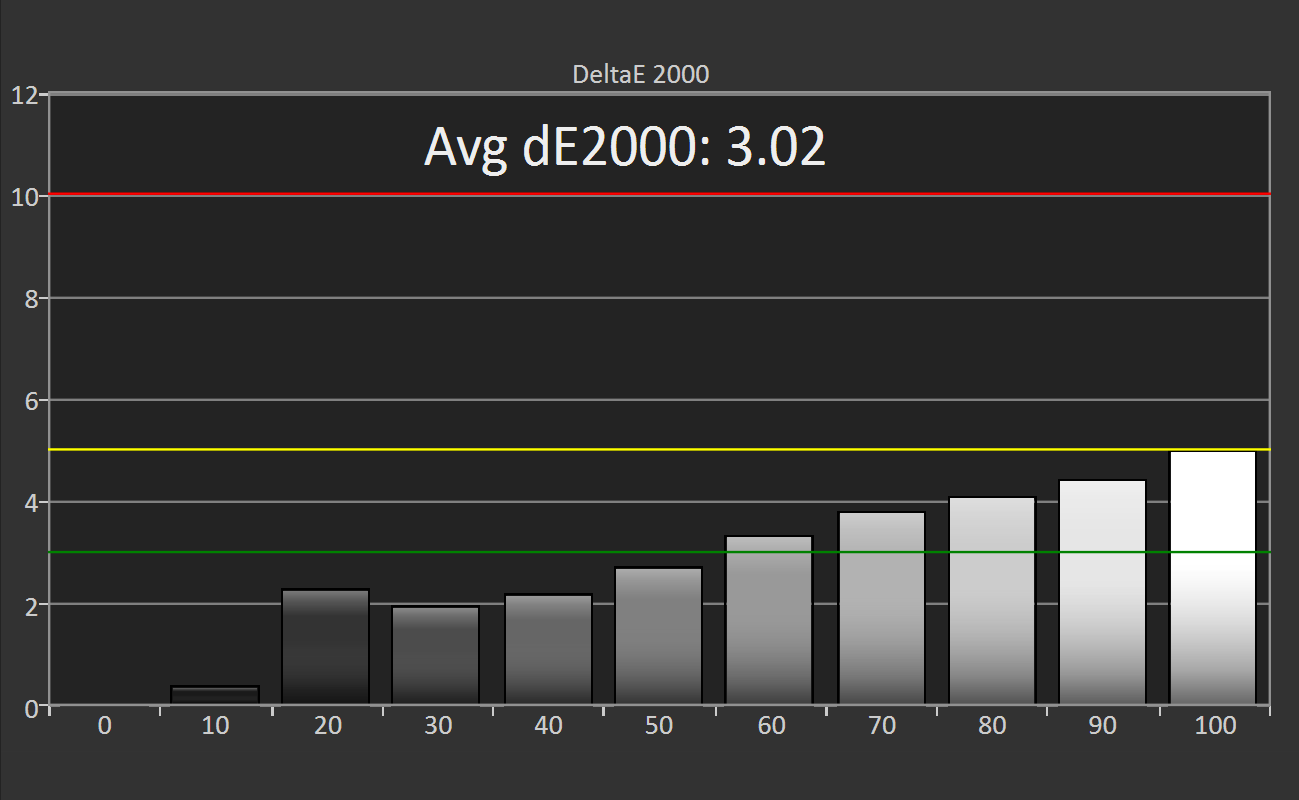
While it doesn't match the Note 4's stellar performance, the Nexus 6 still does well in grayscale accuracy, easily beating the iPhone 6 Plus. Looking at the ΔE2000 chart, we see that error at each gray level remains below the yellow line, which is noticeable but generally considered acceptable. Error values below three (the green line) are considered good, and values below one are essentially imperceptible.

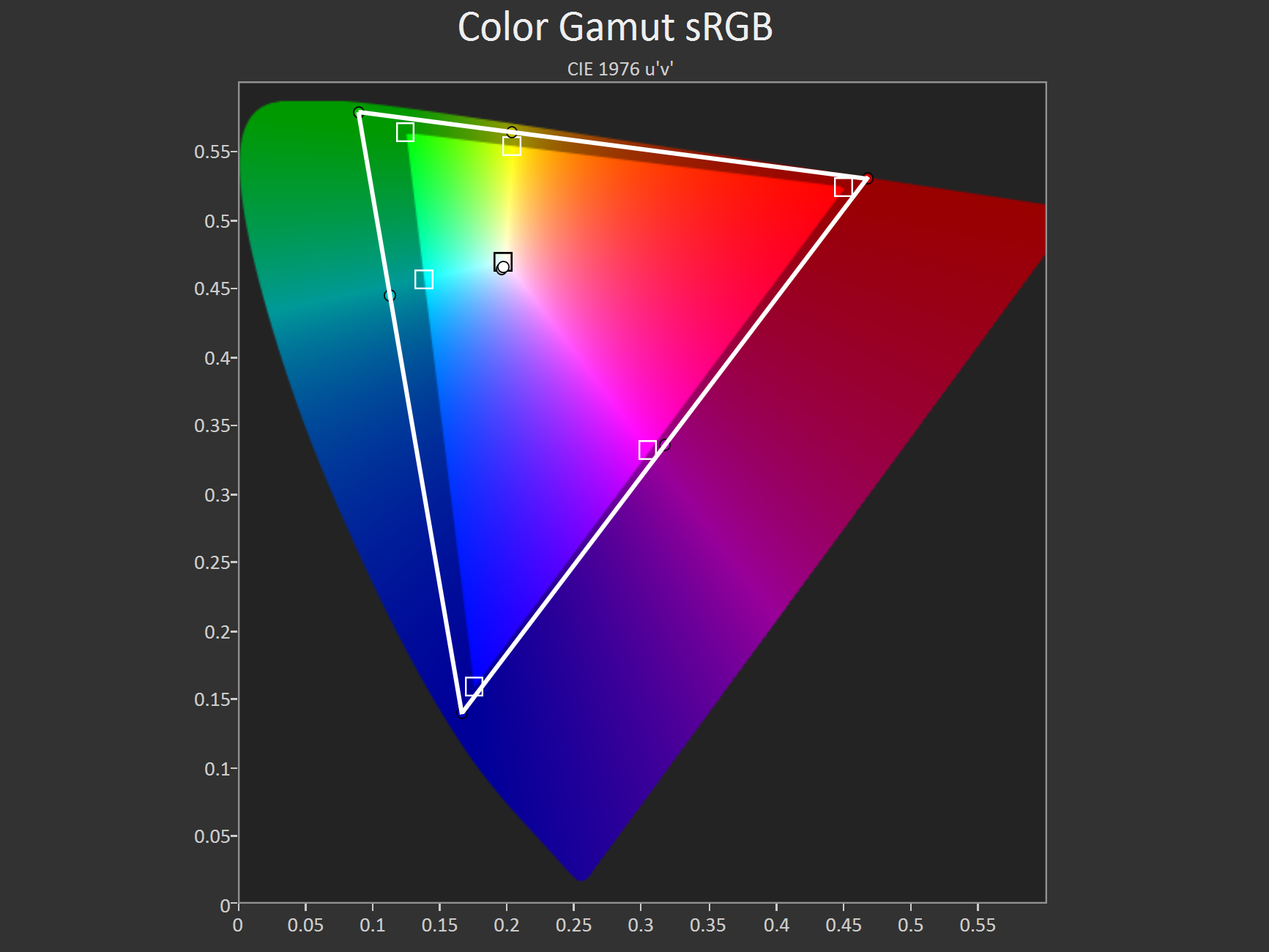
Here's where the Nexus 6 display falls apart. The content you're going to view on a mobile display is targeted to the sRGB color space. Even if the content includes an embedded profile for AdobeRGB or another color space with a wider gamut, Android and iOS don't support color management. Thus, there's no reason for a mobile display to exceed sRGB—at least for now.
The Nexus 6 covers 125% of the sRGB color space. Unlike the Note 4, which also uses an AMOLED screen with wide-gamut support, the Nexus 6 does not include an sRGB screen mode. This means that colors are mapped into the larger color space and don't render as intended, producing overly vivid, neon-like colors. Everything from icons to photos to webpages look horribly wrong. Some people may like the effect, but others will find the eye-searing colors to be distracting, basically ruining the phone's best hardware feature.
The color saturation sweep shows some color compression (unequal spacing between points). It's not as severe as what we saw with the LG G3 prior to the Lollipop update, and it’s mostly overshadowed by the gamut issue.
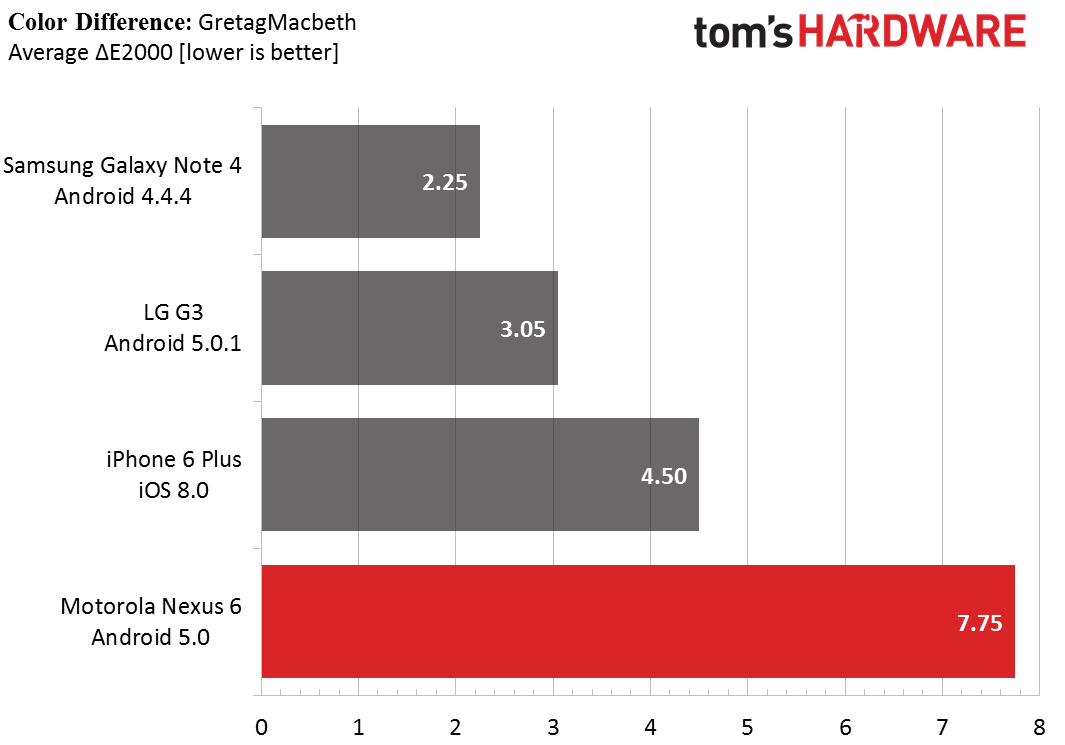
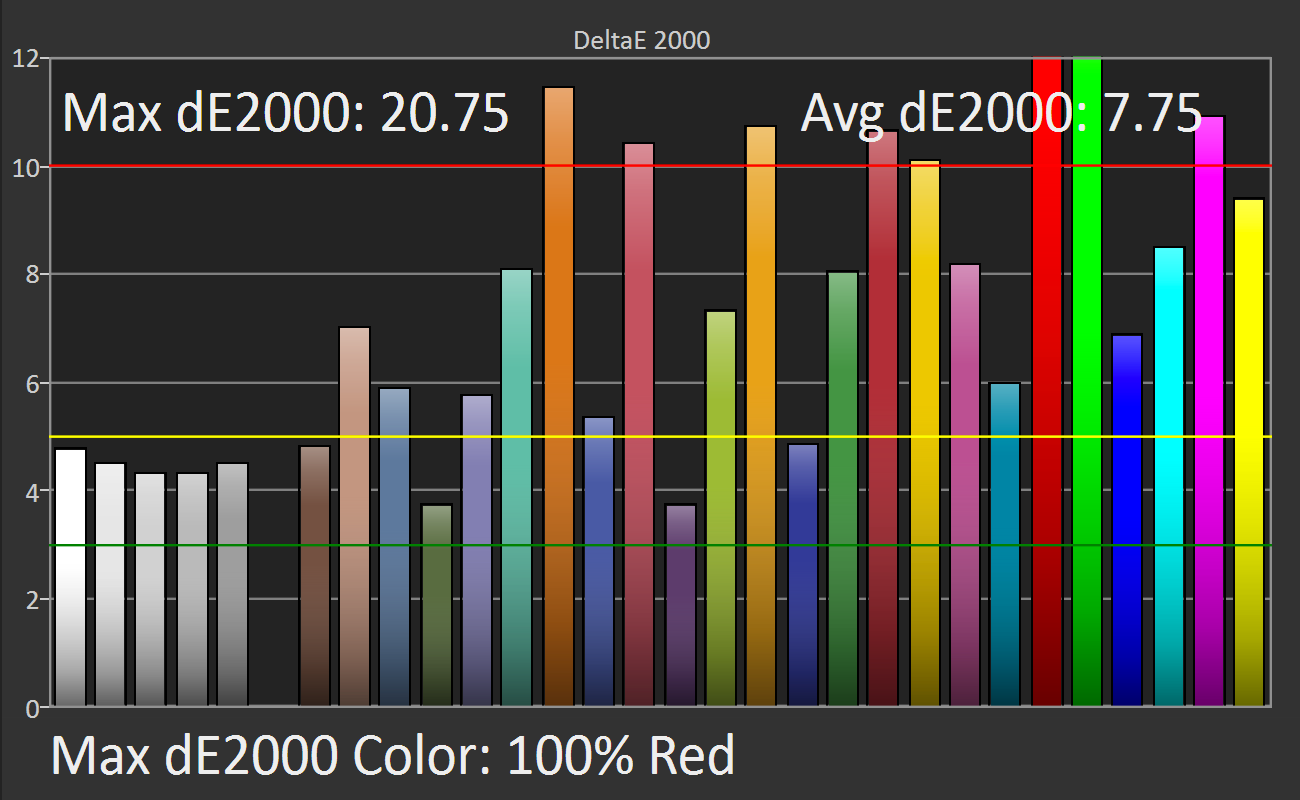
Based on the discussion above it should come as no surprise that the Nexus 6 does poorly in the color accuracy test. Grayscale accuracy again is decent, but almost every color tested shows an error above five, with a peak error of 20.75 for 100% red. This is really unacceptable for a flagship device. I find it puzzling why Google/Motorola does not calibrate the screen for the Nexus 6, but does perform a screen calibration for the $150 Moto E (2015).
The color palette above shows the target color on the bottom versus the color displayed by the Nexus 6 on top. You can see the effect of the wider gamut, and what I mean by neon colors, by looking at the 100% colors in the upper-right corner. There's also a pretty big difference in the displayed Dark Skin and Light Skin colors, which manifests in unnatural looking skin tones in photos and video.
At least viewing angles are good. You’ve got to crank the phone quite a bit to the left or right to get image colors to skew, making it easier to display content to groups.
Overall, the display on the Nexus 6 is disappointing. It's unfortunate that there wasn't any attempt to calibrate the screen, because the hardware is fine. Color perception is a tricky thing however, and people's preferences vary. One reviewer liked how the colors had more "pop", while another thought they looked ridiculous and ruined the experience of looking at photos or video.
Audio Performance
Far and away, one of our favorite Nexus 6 features is its audio. No doubt, you’re familiar with the usual mono speaker fare offered by most phones. There are a few exceptions, but most models fire their speaker to the rear, which might be easier to implement, but it’s the opposite of what users actually want. Do you mount speakers on the back of your monitor? Of course not. Phablets are supposed to be, among many other things, media devices. So it only makes sense that they should have stereo front-firing speakers.
Sony’s Xperia Z3 is one of the few examples in this space of a product that does front-firing right. The Nexus 6 adds one more to the list. The Nexus 6 does give a noticeable amount more volume than a conventional phone (it gets seriously loud), which really pays off when you’re in a car battling road noise or need to hear it from across the room. Music tends to get tinnier at max volume, but the sound is cleaner and fuller overall because the speakers are generally aimed at your ears. Try it and you’ll appreciate the psychoacoustic effect of finally having discernible stereo channels in your palm. The Nexus 6 doesn’t quite match something like HTC’s BoomSound, as found on the Nexus 9, but it’s close. The mid-range is a little anemic with male vocals sounding distant. Cymbals also don't sound as crisp as they should. Adjusting the equalizer definitely seems to help the external speakers, but curiously it boosts overall volume too, not just the frequency band you're adjusting.
Powering this audio experience is the NXP TFA9890A, which includes a class-D audio amplifier rated at 3.6W RMS output with a 3.6V input and driving an eight-ohm load at THD+N=1%. It can also deliver up to 7.2W peak output under the same conditions. To keep things under control, it employs sensors to track the temperature and voice coil excursion of the speakers and tailors its output to reduce the risk of damaging them.
Plugging in a nice set of headphones into the Nexus 6 is also a treat. It's one of the best-sounding phones we've listened to, right up there with the iPhone 6 and Sony Xperia Z3.
Update [13:35 4/18/2015]: Updated sRGB color gamut charts with measurements from C6 colorimeter.
Current page: Display And Audio Performance
Prev Page Hardware Design Next Page Camera Hardware And Software-
MobileEditor ReplyWhy wasn't the S6 used in this comparison?
Primarily because of the difference in screen size. If someone is considering a 6-inch phone, they probably are not interested in 5-inch phones. Thus, we compared it to other devices with a 5.5-inch or larger screen (and the Nexus 5 just because it was the previous generation).
- Matt H. -
Desertlax I think there is a typo about price, the nexus 6 is listed as 649 and 699 on the play store, not "starting at $750".Reply -
Tanquen I don’t know if Google lowered the price or when but it’s been $649 for the last week or so that I’ve been thinking of buying it. So I don’t get the repeated complaint that the price is $750 and too high. ???Reply -
MobileEditor ReplyI think there is a typo about price, the nexus 6 is listed as 649 and 699 on the play store, not "starting at $750".
Thanks for pointing this out. The article has been updated to reflect the current pricing.
- Matt H. -
Stryfex Did I hit my head and go back in time by like 6 months? Why is toms hardware posting reviews of the Nexus 6?Reply -
rtfizzel The Nexus 6 camera does have OIS. At least it is listed as a feature by Google and many other reviews.Reply
https://www.google.com/nexus/6/ -
rtfizzel My bad, misread. Apologies.ReplyThe Nexus 6 camera does have OIS. At least it is listed as a feature by Google and many other reviews.
https://www.google.com/nexus/6/ -
Chillyblue I have owned my N6 since it came out. Unlike others, I ordered it on release date, and got it five days later.Reply
By now long discussions about his big it is are redundant and moot. Those who purchase the phone known that, and like the screen real estate. Size is a preference they choose. If someone wants a smaller screen, they have unlimited options. To be honest, one become quite accustomed to the size rather quickly.Enough about size. Oh, it fits perfectly into my Levi Strauss jeans back pocket.
This phone since upgrading to 5.1 is a lightening fast. I run stock rooted with Franco Kernel. Antutu benchmark is 55,000 and Gerebench is 1200 single core, and 3600 multiple. I've run both encrypted and unencrypted... and frankly I csntvdetect any difference other than a faster boot time.
The build quality is excellent, the screen accurate and detailed, the camera gets the job donecwith clarity and definition....if you use a different third party camera app the results get better.
I've owned a HTC M8, and a Samsung note 3. Touch Wiz sucks, and bulild quality was toy like. HTC M8 offered excellent build quality and sense is far less intrusive then touch wiz.
Personally, pure Android, a bigger screen, faster updates, excellent build quality all make this phone a winner.

